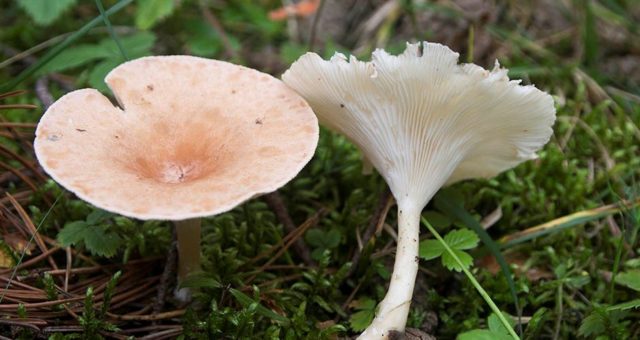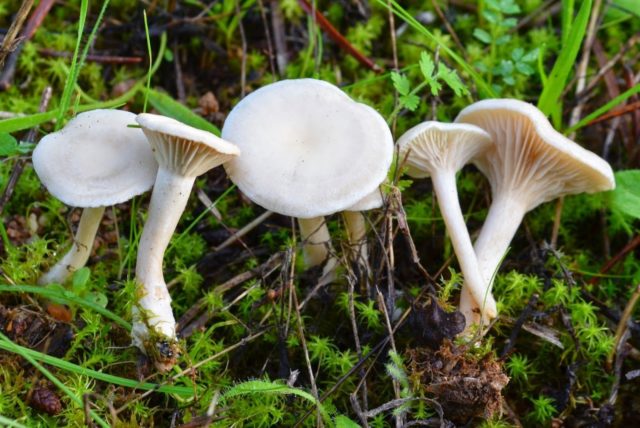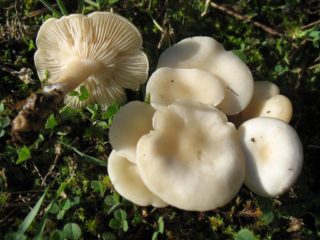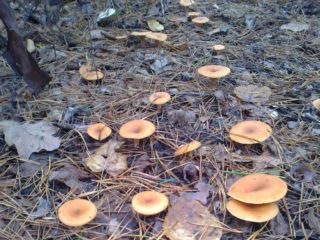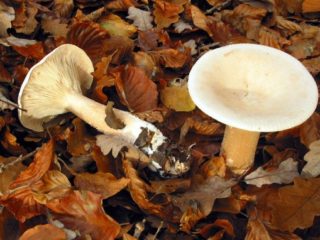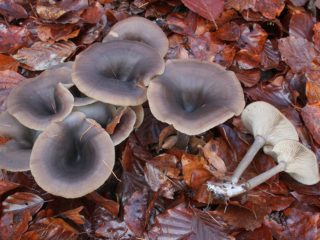Content
The funnel talker is a representative of the Trikholomova (Ryadovkov) family. This specimen has other names: funnel, fragrant or odorous talker. The article presents a photo and description of funnel talker mushrooms, and also discusses the habitat, edibility and rules of use.
Where do funnel talkers grow?
This type of mushroom prefers deciduous and mixed forests and grows well in symbiosis with oaks and pines.In addition, the funnel talker is quite often found in pastures, bushes, forest edges and roadsides. It can be located either singly or in groups, forming small circles. The mushroom prefers a temperate climate, most common in the European part of Russia, Western Siberia, and the North Caucasus. The optimal time for development is the period from August to October.
What funnel talkers look like
The funnel talker is a small mushroom, shaped like a funnel or a glass. The cap of a young specimen is thin and slightly convex, then as it matures it becomes funnel-shaped with an uneven edge. Its surface is smooth, dry, light yellow, brown or reddish in color. The diameter of the funnel for the entire period reaches no more than 10 cm. On the underside of the cap there are narrow, dense and white plates descending to the stem. The pulp is slightly yellowish or white, thin and elastic. It has a specific unpleasant odor and subtle taste. It has a rounded leg, with a slight thickening at the base, the length of which can reach 7 cm. As a rule, its flesh is more fibrous and tough, and the color is similar to the shade of the cap. The spores are smooth, non-amyloid, elliptical in shape.
Is it possible to eat funnel talkers?
Funnel talkers are classified as edible forest gifts of the fourth category. However, they should be eaten only after preliminary cooking. Initially, they are boiled, only then do they begin to directly prepare the desired dish. The broth in which they were cooked cannot be used for further use.
Taste qualities of funnel talker mushroom
It is recommended to eat only young specimens, as old ones become tough and tasteless. To improve the taste, you should add various spices, and when pickling, use a mixture with a large amount of vinegar.
Benefits and harm to the body
Vorovushka funnel-shaped, like most mushrooms, contains a lot of useful substances that have a beneficial effect on the body, namely:
- due to low calorie content, promotes weight loss;
- fiber improves metabolism, removes toxins, lowers cholesterol;
- has antibacterial properties;
- restores blood circulation;
- inhibits the aging process of the skin and the entire body.
Thus, the funnel talker can bring enormous benefits to human health, but it is worth remembering that moderation is needed in everything.
False doubles
The edible funnel talker is similar to many poisonous species, the following forest representatives are especially similar to it:
- Talker brown-yellow. The cap of a young specimen is colored yellowish-brownish, and with age it fades and acquires a creamy tint. Expert opinions on the edibility of this species are divided: some sources indicate that the mushroom is conditionally edible, while others indicate that it is poisonous. One main difference from the funnel-shaped one is the wet brown spots on the plates and cap, as well as slightly bent edges.
- The talker is whitish – belongs to the category of poisonous mushrooms.The cap has a powdery white coating, which makes it even more similar to old and faded funnel talkers. The pulp exudes a mealy aroma.
Collection rules
The funnel talker must be collected away from industrial enterprises, landfills, and highways, since specimens growing in contaminated places can cause severe poisoning of the body. In addition, only young mushrooms are suitable for consumption. Therefore, it is not recommended to place especially large, faded and clearly funnel-shaped ones in a general basket.
Use
It is believed that the legs of the funnel talker are not tasty, hard and difficult to digest, so only the caps are used for food. It was previously mentioned that forest products must be processed before cooking. To do this, they are cleared of debris, washed, the legs are removed and left in water for a while, then boiled for at least 30 minutes. After this, the processed forest products can be dried, fried, frozen, salted or pickled. However, due to long-term processing, funnel talkers are not suitable for making creamy sauces and soups.
Conclusion
The funnel talker is a little-known edible species and is found quite often in a variety of places. However, the species in question has quite a few poisonous counterparts, so the mushroom picker needs to thoroughly study the differences between these specimens in order to avoid poisoning. In addition, you should know that funnel talkers are contraindicated for people suffering from allergies, stomach diseases and children under 12 years of age.
